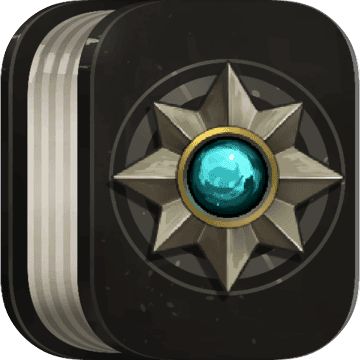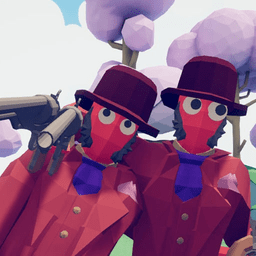- 关于球王贝利的介绍英文要英文版的Pele介绍,内容可包括——体育生涯、绰号由来、训练的故事、所获荣誉等等 因为不确定是否会有人回答,先不给分,回答好的,自然追加!先谢谢各位
- 监狱建筑师监狱都建好了为什么犯人不进来
- 我是学国际通商贸易专业的,以后想在游戏开发或者和高科技有关系的公司就业,需要准备什么吗
- 假面骑士城市大战怎么玩
- 英语翻译亲爱的David,我们这将举行一次外国人中文才艺比赛,获奖的前三名选手将去北京决赛.比赛的要求有:汉语自我介绍,才艺展示,回答评委提问.我希望你来参加这次比赛.
关于球王贝利的介绍英文要英文版的Pele介绍,内容可包括——体育生涯、绰号由来、训练的故事、所获荣誉等等 因为不确定是否会有人回答,先不给分,回答好的,自然追加!先谢谢各位
Pele
Born: 23 October, 1940. Tres Coracoes, Brazil
International Caps 92
International Goals 77
Teams Santos, New York Cosmos
Team Honours World Cup (1958, 62, 70)
World Club Championship (1962, 63)
Sao Paulo State Championship (1956, 58, 60, 61, 62, 64, 56, 67, 68)
Individual Honours South American Player of the Year (1973)
"I was born for soccer, just as Beethoven was born for music." Arrogant, pompous words. Except when they are spoken by Edson Arantes do Nascimento, the Brazilian genius known throughout the football world as Pele.
A veteran of four World Cups, scorer of 1,283 first-class goals - 12 of them in World Cup final tournaments - a member of those magical Brazilian squads that won soccer's greatest prize in 1958, 1962 and 1970.
But just as a collection of notes do not make a Beethoven symphony, statistics cannot capture the majesty of those glorious Brazilian sides. This was football played to a samba beat. Beautiful skills, astonishing speed and ball control - and of all those great players in the yellow and green shirts, Pele was the greatest of them all.
He was lithe, agile, strong and seemed to be able to make the ball do as he pleased. Blessed with a stunning shot and an ability to soar above defences, he was expected to perform some astonishing feat of trickery every time he was in possession.
And Brazil played such adventurous football, always attacking, constantly looking to score. Who can forget the rythmic chanting of their deliriously happy supporters? "Bra-zil, cha cha cha, Bra-zil, cha cha cha."
It was the 1962 World Cup in Chile when those chants were heard for the first time in Europe on TV and British fans were quick to copy. First club names were shouted out, followed by a burst of clapping. Soon the strains of "ee-ay-addeo" echoed round Football League grounds.
Three decades on, the chants may be different. But it was the Brazil of Pele which gave them to the world.
Pele was born in the poor district of Tres Coracoes in 1940. His father, known as Dondhino, was a footballer too, but an undistinguished one.
Pele was in love with football from the time he learned to kick a ball. But his mother was not so keen. Dondhino earned little money from the game and she wanted something better for her son. Had she got her way, football would have been denied one of its greatest talents.
Pele's precocious skill came to the attention of de Brito, a former Brazilian international who began to coach him. In 1954, aged 14, he joined Bauru Athletic Club juniors in Sao Paulo. At 16, despite a knee injury which was to trouble him throughout his career, he moved to Santos where he remained until 1974.
Together, Pele and Santos were to become legends, touring Europe and playing friendly matches. One of the British sides to entertain them was Sheffield Wednesday. As late as 1972, Pele turned out in his club's famous all-white strip to play one half in a goodwill visit to Hillsborough.
It was the World Cup of 1958 in Sweden which was to create the stage for Pele's genius. He was 17 and had won his first cap the previous year. He arrived in Sweden with an injury and was held back until Brazil's third and final group match against the Soviet Union in Gothenburg.
Brazil won 2-0, Pele hit the post, laid on the second goal for Vava and a star had been born. The quarter-final was against Wales. Brazil only won 1-0. The scorer was Pele, his shot deflecting off Stuart Williams. It was his first World Cup goal - and he was to score six in a sequence of three games by the time the final was over.
A hat-trick against France in the semi-final was followed by two goals against Sweden in the final. One of them, a breathtaking effort, was described by the football authority Brian Glanville in his book, The Story of the World Cup.
"Catching a high ball in the thick of the penalty area on his thigh," wrote Glanville, "he hooked it over his head, whirled round and volleyed mightily past Svensson." Pele also hit the post as the Swedes went down 5-2 in front of their home crowd. Brazil had won the World Cup for the first time and a teenage prodigy was on his way to international fame and fortune.
By 1962 Brazil were the undisputed kings of football and Pele was rated the best player in the world. He was just 21. But the Chile finals were to be shortlived for him as Brazil sought to retain their crown.
Their opening match was against Mexico. Brazil won 2-0, Pele scoring a brilliant goal in which he beat four men before putting the ball past the keeper. But in the next game, a 0-0 draw with Czechoslovakia, Pele tore a thigh muscle which put him out of the tournament. Brazil became double world champions, beating Czechoslovakia 3-1 in the final. But if 1962 was bad for Pele, 1966 was worse. This time for him and his country. The year of England's greatest football triumph saw Brazil lose their first World Cup match for 12 years and then they crashed out of the tournament in the first round as Pele was literally kicked off the park by the butchers of Portugal.
Brazil played just three games in the 1966 World Cup, all of them at Everton's Goodison Park. They got off to a reasonable start beating Bulgaria 2-0, Pele scoring from a free kick. But in the second game, with Pele missing through injury, they were given a football lesson by the mighty Magyars of Hungary, going down 3-1.
Pele was back for the crucial tie with Portugal, but it was soon obvious he was far from full fitness. Brazil had made seven changes after that shock defeat by Hungary, but it made no difference as Portugal quickly let it be known they were taking no prisoners. Morais cynically chopped down Pele in brutal fashion and was amazingly allowed to stay on the pitch by English referee George McCabe. Pele was forced off and, though Brazil were merely a shadow of the sides that had ruled the world, football won few friends by the manner of Portugal's 3-1 victory.
Pele vowed never to appear in another World Cup, but by 1970 he had changed his mind. This time the tournament was held in sunny Mexico and this Brazilian team was probably the greatest of them all.
Pele, the boy who had played alongside Zito and Garrincha, the young man who had traded passes with Amarildo and Didi, was now a 29-year-old veteran lining-up in an attack that included Rivelino, Tostao and the incomparable Jairzinho.
And in the heat of Guadalajara he was to take part in one of the finest World Cup matches - the clash of champions against World Cup holders England.
Brazil's opening match was against Czechoslovakia who they tore apart 4-1. However, playing fabulous attacking football, Brazil left themselves open at the back and went a goal down. They soon equalised through a scintillating, swerving free kick from Rivelino. After that, it was one-way traffic, Pele getting the second and Jairzinho the last two.
Now it was England's turn. And what a match it was. This England team was regarded by many as technically superior to the side that had won the World Cup at Wembley in 1966. Alan Mullery was deputed to mark Pele and did a terrific job. But how do you mark genius? By the tenth minute, Pele was stealing in at the far post, towering above England's defence to drive down a Jairzinho cross with a ferocious header.
If ever a goal looked a certainty, this was it. As the ball screamed towards its destination inside the post, somehow, miraculously, Gordon Banks got a hand to it and flicked it up over the bar.
The save of the century? Probably. Pele could only stand and stare in amazement - along with several million incredulous TV viewers around the world.
The game, often branded the "real" final, was a classic. England defended brilliantly, Alan Ball hit the bar, but a Jairzinho goal - laid on by who else but Pele - was enough to give Brazil a 1-0 victory.
Afterwards, a picture of one of the great moments of sportsmanship flashed round the world. It was of Pele and England's captain Bobby Moore, stripped to the waist, swapping shirts and embracing each other, both recognising that the other was a master of his trade. Pele scored twice in Brazil's final group match in a 3-2 defeat of Romania before they disposed of Peru 4-2 and Uruguay 3-1 to reach the final.
Brazil's opponents were Italy and, as both teams had won the World Cup twice, it meant the victors would keep the Jules Rimet Trophy permanently.
Pele, in his World Cup swansong, scored with a spectacular header and made two other goals as Brazil, playing football which seemed on another level to anything the game had seen before, crushed Italy 4-1.
Brazil had become the first nation to win a hat-trick of World Cups. Pele retired from international football soon afterwards, but continued to play for Santos for a further four years. When he finally called it a day at the age of 34, Santos marked his passing by removing the No.10 shirt from their line-up. It was an admission that no-one could compare with The Master.
Then, in 1975, Pele surprised everyone by coming out of retirement to play for the New York Cosmos in America's fledgling soccer league. The price probably helped - a small matter of $4.5 million.
He stayed for two years and in 1976 played for Team America in the Bicentennial Tournament against England. His Yankee team-mate that day was none other than Bobby Moore appearing against his old colleagues!
The end of a supreme career finally came in 1977 when Pele hung up his boots for good and settled for a role as a sporting ambassador, later becoming Brazil's Minister for Sport. He also popped up from time to time endorsing the virtues of Pespi Cola.
But even now, 20 years on, such was his greatness that whenever Brazil are mentioned, the name that comes first to football fans' lips everywhere is Pele . . . the one and only.
监狱建筑师监狱都建好了为什么犯人不进来
牢房问题:
1.你要选择房子圈出牢房区。
2.要购买有警卫。
3.前期牢房不要太大,东西不要太多,因为牢房有等级囚犯权限不够不会住。
4.牢房封闭不能有洞(有洞会给提示)首先你得有接待所(犯人第一个去的地方)。
一、《监狱建筑师》是一款玩法非常新颖的模拟经营游戏作品,它的乐趣来自于玩家对于整个游戏布局的把握。通过上帝的视角去合理的建设监狱。并监视里面每一个犯人的一举一动。当然游戏中还会给玩家带来意想不到的事件,比如,火灾。让玩家体验一把监狱管理员的辛劳。
二、Introversion的这款安全类模拟游戏以有趣的将资本、建筑、管理和道德融为一体,将多个往往相互矛盾的目标摆在你面前,囚犯的安全、高效利用空间、囚犯的健康、盈利以及确保你的监狱绝对安全。
三、游戏开始时可以接收三种不同等级的囚犯。你可以从三种等级大致判断囚犯的刑期、概率、性格等。风险等级不直接决定囚犯的概率,但内在的性格特征会影响它。你需要根据囚犯的犯罪记录进行不同的安排以避免风险,有时你可以改变他们的安全评级
我是学国际通商贸易专业的,以后想在游戏开发或者和高科技有关系的公司就业,需要准备什么吗
在软件开发中,游戏开发这个方向看起来目标很明确,但其实是个领域很广的方向,入门的时候如果得不到指点一二,很容易误入歧途,相反,如果走这条路之前能得到前人的一些指路,是可以事半功倍的。
假面骑士城市大战怎么玩
Let me introduce myself.
Let me do some introduction.
大家好我是小芜同学。
1、本作为一款结合城市建设及动作元素的手机游戏。玩家需要建设属于自己的都市,而随著都市愈加繁荣,假面骑士就会愈强。击倒怪人的话,将可以回收素材用来建设市街,战斗时亦有多彩的技能卡片供玩家使用。游戏更收录了自昭和《假面骑士》至平成《假面骑士Build》共29套作品主题曲。故事背景为这是众多的假面骑士世界中,其中一个平行时空,而在这裡我们要借助假面骑士之力,守护市街,!
2、250石头的任务一共有13个 但实际上不到13个 要完成这些任务才能拿到250石头 这些任务就是250石头任务上面带问号的任务 只要把带问号的任务全部完成就行了
3、建造骑士加成的建筑 即右下角的那个 随便建一个就行 不过最好建自己练的骑士的老家
4、打一次强化大作战 注意 这个是要在一定时间段才有的 不知道时间的话可以点这个任务的问号(因为时间差 要减掉一小时 )我只知道早上6点有 10有 下午就不清楚了(周日八点后会持续一天 应该是八点 要么是八点要么是九点)
谢谢大家我的回答结束,拜了个拜。
英语翻译亲爱的David,我们这将举行一次外国人中文才艺比赛,获奖的前三名选手将去北京决赛.比赛的要求有:汉语自我介绍,才艺展示,回答评委提问.我希望你来参加这次比赛.
Dear David,we held that the Chinese foreign talent contest,winning the top three players will go to Beijing final.The game requires:Chinese self-introduction,talent show,to answer the judges questions...









